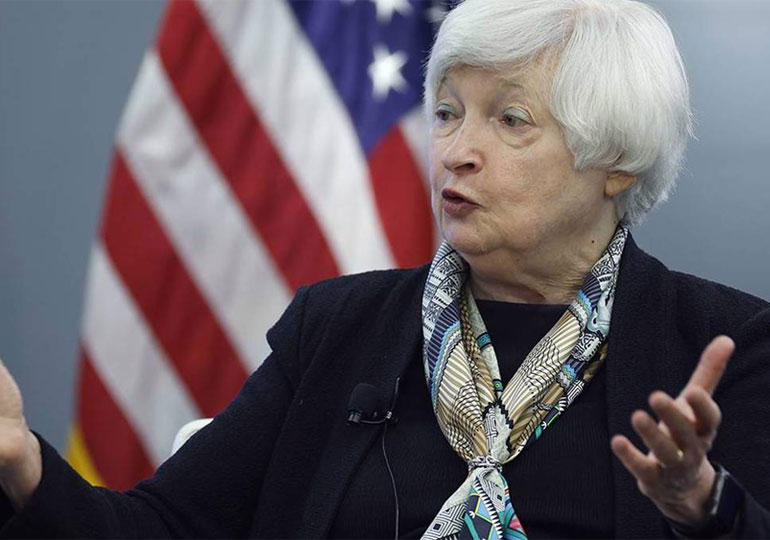Image Credits to Chip Somodevilla/Getty Images
There are signs of a major reorientation toward an economic policy framework that is rooted in production, work, and localism instead of finance, consumerism, and globalism. It might just turn into a new policy model that captures imaginations across the political spectrum.
A new economic paradigm becomes truly established when even its purported opponents start to see the world through its lens. At its height, the Keynesian welfare state received as much support from conservative politicians as it did from those on the left. In the United States, Republican presidents Dwight Eisenhower and Richard Nixon bought fully into the paradigm’s essential tenets – regulated markets, redistribution, social insurance, and counter-cyclical macroeconomic policies – and worked to expand social-welfare programs and strengthen workplace and environmental regulation.
It was similar with neoliberalism. The impetus for it came from economists and politicians – such as Milton Friedman, Ronald Reagan, and Margaret Thatcher – who were market enthusiasts. But the paradigm’s eventual dominance was due in no small part to center-left leaders like Bill Clinton and Tony Blair, who had internalized much of its pro-market agenda. These leaders pushed for deregulation, financialization, and hyper-globalization, while paying lip service to ameliorating the consequent rise in inequality and economic insecurity.
Today we are in the midst of a transition away from neoliberalism, but what will replace it is highly uncertain. The absence of a solidified new paradigm is not necessarily bad. We do not need yet another orthodoxy offering cookie-cutter solutions and ready-made blueprints for countries and regions with different circumstances and needs.
But economic policy must be guided by an animating vision. History suggests that the vacuum left as neoliberalism wanes will soon be filled by a new paradigm that eventually will need support across the political spectrum. Such an outcome may seem impossible given current political polarization. In fact, there already are signs of convergence.
In particular, a new bipartisan consensus may be emerging around “productivism,” which emphasizes the dissemination of productive economic opportunities throughout all regions and all segments of the labor force. Unlike neoliberalism, productivism gives governments and civil society a significant role in achieving that goal. It puts less faith in markets, is suspicious of large corporations, and emphasizes production and investment over finance, and revitalizing local communities over globalization.
Productivism also departs from the Keynesian welfare state by focusing less on redistribution, social transfers, and macroeconomic management and more on supply-side measures to create good jobs for everyone. And productivism diverges from both of its antecedents by reflecting greater skepticism toward technocrats and expressing less knee-jerk hostility to economic populism.
The rhetoric of US President Joe Biden’s administration – and some of its policies – feature many of these elements. Examples include the embrace of industrial policies to facilitate the green transition, rebuild domestic supply chains, and stimulate good jobs; blaming large corporate profits as a culprit behind inflation, and refusing (so far) to revoke former President Donald Trump’s tariffs against China. When the administration’s most senior economist, Secretary of the Treasury Janet Yellen, extols the virtues of “friend-shoring” – sourcing supplies from US allies – over the World Trade Organization, we know the times are changing.
But many strands of this thinking exist on the political right as well. Alarmed by China’s rise, Republicans have made common cause with Democrats in pushing for investment and innovation policies to bolster US manufacturing. US Senator Marco Rubio, a past and likely future Republican presidential candidate, has made impassioned pleas for industrial policy – promoting financial, marketing, and technological assistance to small businesses and to manufacturing and high-tech sectors. “In those instances in which the market’s most efficient outcome is one that’s bad for our people,” said Rubio, “what we need is targeted industrial policy to further the common good.”
Many on the left agree. The architect of Trump’s China trade policy, Robert Lighthizer, has won many progressive fans for his hardball tactics vis-à-vis the WTO. Robert Kuttner, a leading voice on the left, has argued that Lighthizer’s views on trade, industrial policy, and economic nationalism “were more those of a progressive Democrat.”
The Niskanen Center, named after the libertarian economist William Niskanen (a principal adviser to Reagan), has made “state capacity” one of its main planks, emphasizing that governments’ ability to provide public goods is important for a healthy economy. Oren Cass, an adviser to the Republican Mitt Romney during his 2008 and 2012 presidential campaigns and a former senior fellow at the pro-market Manhattan Institute, is a critic of financialized capitalism and supports reshoring supply chains and investing in local communities.
Likewise, Patrick Deneen, one of the leading intellectuals of the US “populist right,” advocates “pro-worker policies” and “the encouragement, through government policy, of domestic production.” During a recent interview in which Deneen discussed these and other economic policies, the New York Times writer Ezra Klein remarked: “What’s funny about that to me is that they seem to me to resemble what the current Democratic Party is.”
As James and Deborah Fallows found when they traveled across America in their single-engine plane to study local economic development, pragmatism can override political partisanship when it comes to fostering businesses, job creation, and public-private partnerships. Local politicians confronted by the challenges of economic decline and joblessness engaged with community groups, entrepreneurs, and other stakeholders in extensive policy experimentation. And in many cases their political affiliation made little difference to what they did.
Whether this kind of cross-party collaboration and fertilization of ideas will amount to a new paradigm remains to be seen. There are deep divides between Republicans and Democrats on social and cultural issues such as abortion rights, race, and gender. Many Republicans, including prominent figures such as Rubio, have yet to renounce their allegiance to Trump, who remains a threat to US democracy. And there is always the danger that the “new” industrial policies favored by both conservatives and progressives will fizzle out or turn into the old measures of the past.
Nonetheless, there are signs of a major reorientation toward an economic-policy framework that is rooted in production, work, and localism instead of finance, consumerism, and globalism. Productivism might just develop into a new policy model that captures imaginations of even the most polarized of political opponents.
This article was originally published on Project Syndicate.
Dani Rodrik
Dani Rodrik, Professor of International Political Economy at Harvard University’s John F. Kennedy School of Government, is President of the International Economic Association and the author of Straight Talk on Trade: Ideas for a Sane World Economy (Princeton University Press, 2017).
















